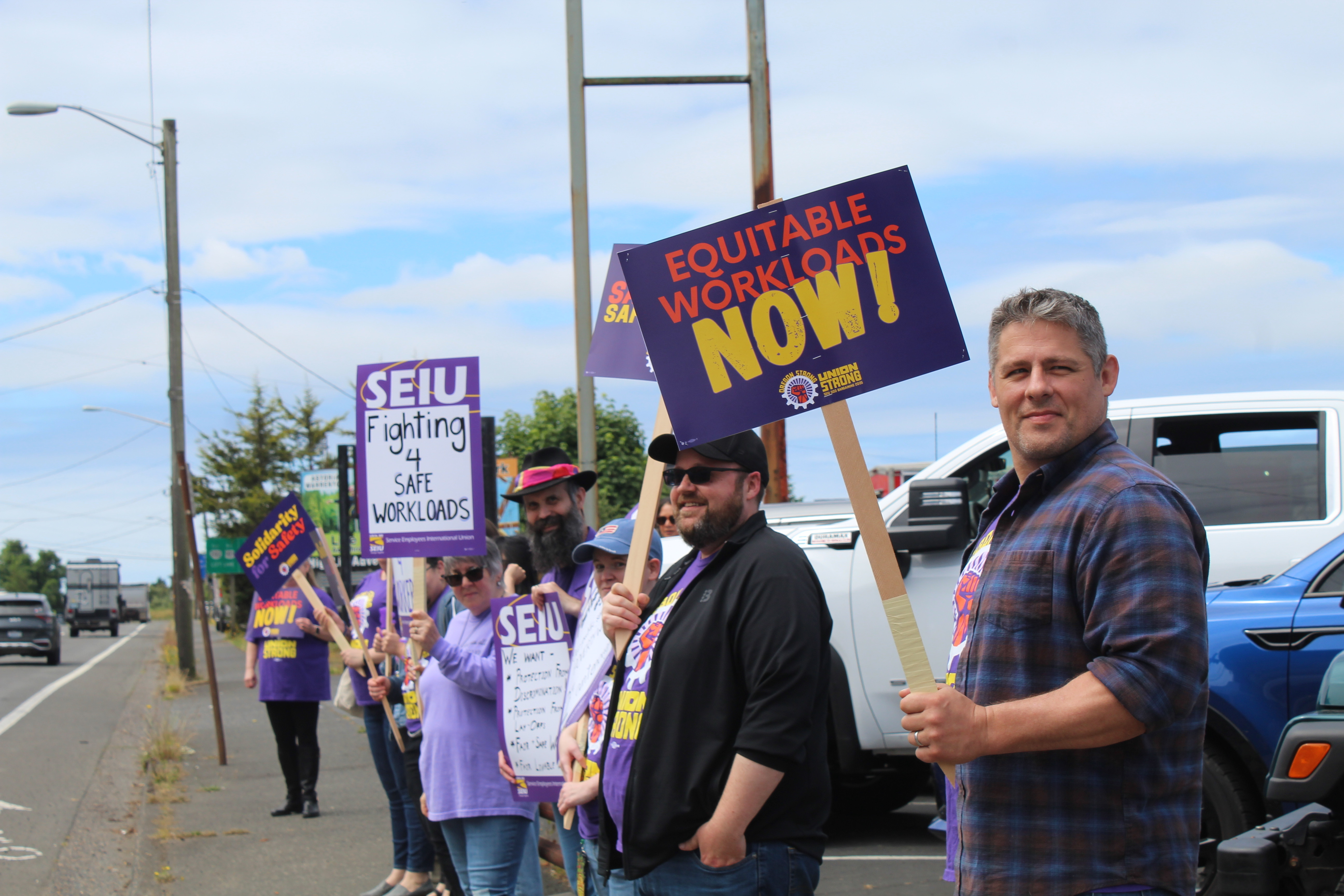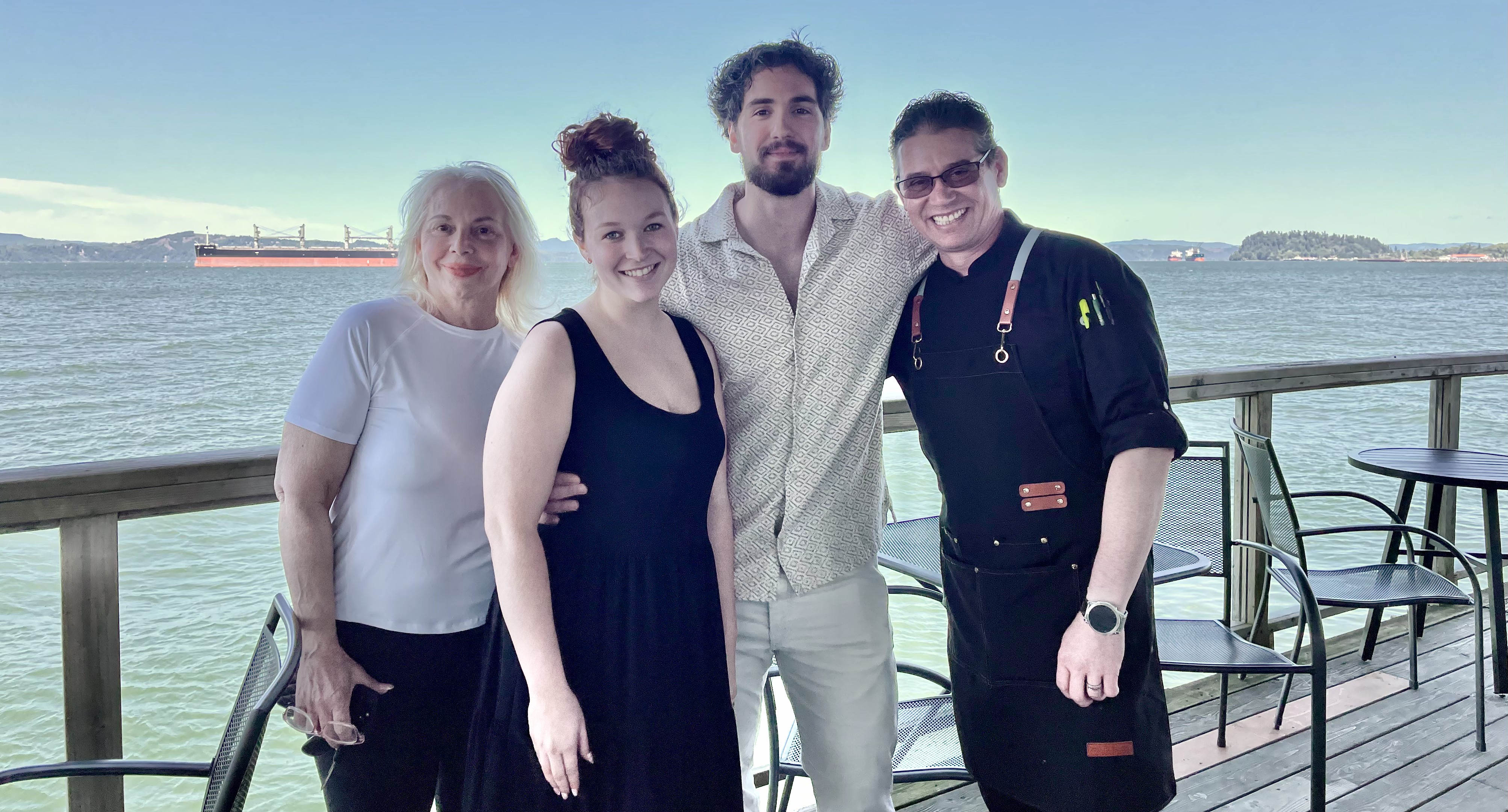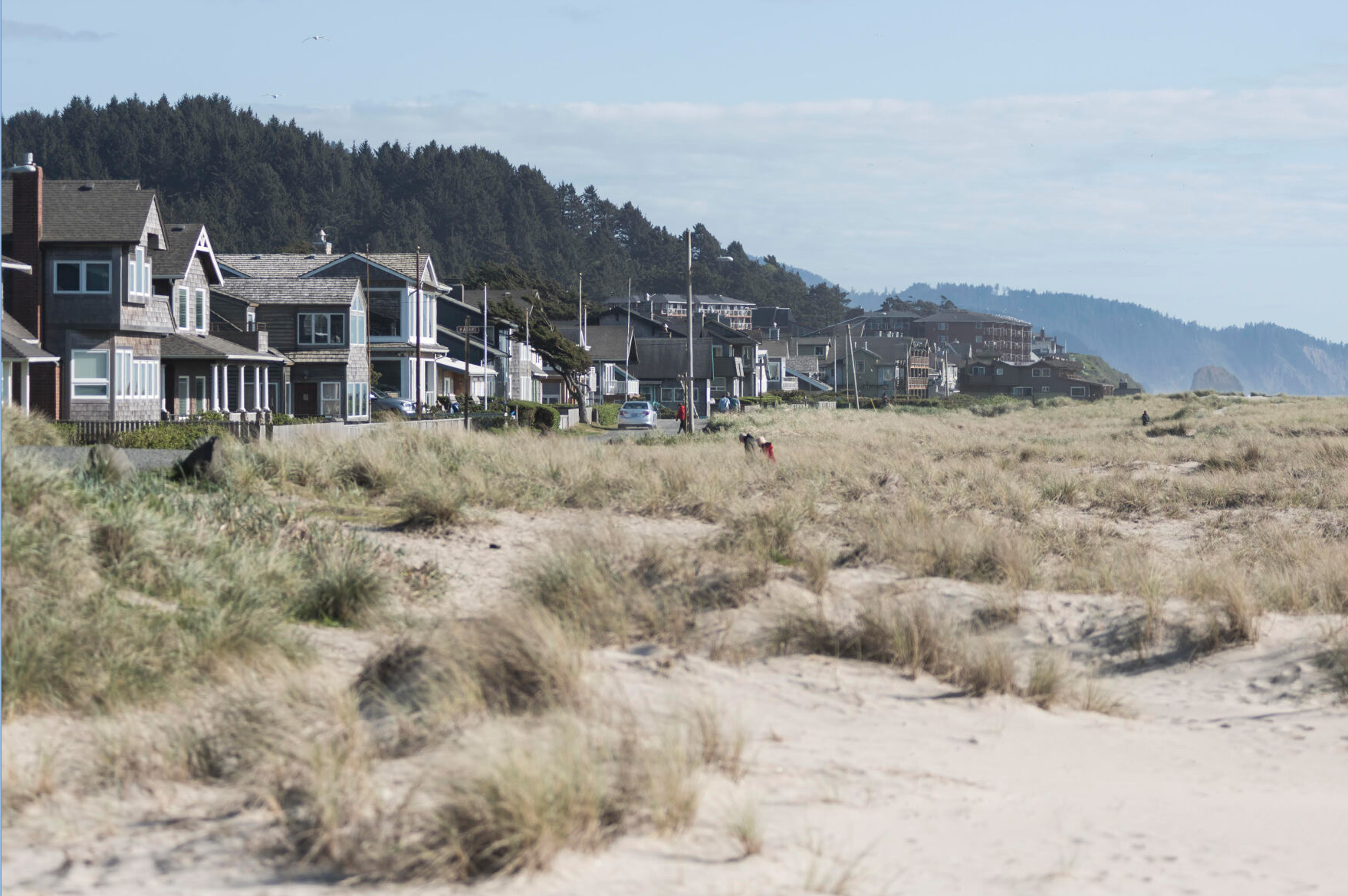Tribes slow Oregon’s offshore wind plans
Published 4:43 pm Friday, October 11, 2024

- The view from Gregory Point, a cape just south of Coos Bay, is majestic. Tribal nations on the coast say the view, the land, the fish and other marine life – fundamental to their cultural and spiritual legacy – could in the coming years be marred by massive floating wind towers and their turbines.
To Courtney Krossman and Jesse Beers, the windswept view off Gregory Point offers more than just postcard-perfect scenery.
Trending
The majestic cape juts into the Pacific Ocean just south of Coos Bay, its sharp sandstone cliffs ringed by dark water.
“When you look in that direction, the view is essentially the same as what our ancestors saw when they were standing here. It has not altered,” said Krossman, the tribal historic preservation officer for the Confederated Tribes of Coos, Lower Umpqua and Siuslaw Indians.
The headland was once home to a village of Miluk-speaking Coos people. Officially returned to the coastal tribes just a decade ago, the site is home to first salmon ceremonies, remembrances for the dead and prayers for ancestors — traditions that Krossman and Beers, the tribes’ cultural stewardship manager, are working hard to preserve.
Trending
The tribes’ leaders say the view, the land, the fish and other marine life — fundamental to their cultural and spiritual legacy — could in the coming years be marred by massive floating wind towers and their turbines.
It’s why the tribal confederation has emerged as one of the most vocal opponents of offshore wind energy in Oregon, suing the federal government to stop the state’s first-ever offshore wind auction and demanding the government do a full environmental analysis of how floating wind farms could affect ocean species and local fisheries along the West Coast.
At the end of September, the U.S. Bureau of Ocean Energy Management canceled the auction that had been set for Tuesday. The announcement came after Gov. Tina Kotek, a Democrat, sent a terse letter urging the bureau to terminate the lease sale. The governor cited the tribal lawsuit and opposition as one of the chief reasons for delaying offshore wind in the state.
The fledgling industry is a key part of the Biden administration’s aggressive development of renewable energy, deemed critical to the country’s rapid transition to clean energy.
But coastal tribes in Oregon, decimated by over a century of land loss, development and poor land management decisions, have urged the need to slow down.
They want the federal government to fully vet the drawbacks and benefits of offshore wind energy before allowing the sale of leases.
Computer-modeled visual simulations presented to the tribes by the ocean bureau showed wind towers would be clearly visible on fogless days from Gregory Point, Krossman said. Flashing lights on turbine blades would also be visible at night.
The Confederated Tribes of Coos, Lower Umpqua and Siuslaw Indians are one of many tribal nations and tribal organizations throughout the U.S. at the forefront of opposition to offshore wind. They include tribes in California, Washington state and on the East Coast. In Oregon, they’re joined by the fishing industry and coastal communities.
The tribes, many facing challenges linked to climate change, including rising seas and the disappearance of traditional food sources such as salmon and mussels, say they recognize the urgency for climate solutions but caution that projects must not trample on the environment, tribal cultural sites and tribal rights.
“The tribes are not against green energy,” Beers said. “We recognize climate change has always been happening and now it’s happening on a much shorter time frame due to human causation.”
“We want solutions, we want to start taming down the carbon footprint. But green energy has to be done in the right way. You have to know what your solution is costing you.”
Oversized ambitions
By 2030, the White House aims to produce 30 gigawatts of offshore wind power — considered a green technology that can deliver stable and constant electricity – on both coasts by the end of this decade, enough to power 10 million homes.
In Oregon, the federal government designated 195,012 acres for floating farm development off Coos Bay and Brookings in areas within coastal tribes’ ancestral territories.
Offshore wind has been touted as an “immense resource” that could “play a critical role in helping the state achieve its clean energy goals,” according to an Oregon Department of Energy report published two years ago.
Proponents say it could bring new jobs and manufacturing opportunities to economically depressed coastal areas. Even those who agreed to slow down its development — the governor, Oregon’s congressional delegation, environmental groups — acknowledge that it’s badly needed to generate clean electricity.
“It might be beneficial to wait until all the groups can get this unique floating offshore wind responsibly developed in Oregon,” said Damon Motz-Storey, director of the Oregon chapter of the Sierra Club.
But, they added, “It’s essential for the survivability of humanity and other species that we use every single tool in the toolbox, including offshore wind.”
The state had hoped to add 3 gigawatts of floating offshore wind into Oregon’s electric grid by 2030 — enough to power 1 million homes annually — though the fast-paced deadline was purely aspirational.
In recent weeks, state officials found out that four of the five companies eligible to bid in the lease sale no longer planned to participate. That left only one company, an Oregon-based solar developer, to bid in the auction, leading the federal agency to cancel the auction over insufficient bidder interest.
It’s now obvious the 3 gigawatt goal won’t be met, given that surveying and research — which happens before the design and construction of offshore wind farms — can take up to five years and it’s unclear when a new auction would take place.
The tribes initially were not opposed to the idea of offshore floating farms, as long as they did not adversely affect marine life and cultural sites. Tribal officials urged the federal government to study project impacts before launching leasing activities and asked that the wind areas exclude sacred sites and fishing and cultural gathering spots.
They based those demands on painful lessons from past projects carried out without tribal input that led to environmental harms.
Those included hydroelectric dam construction on the Columbia River resulting in the demise of the region’s salmon runs, the flooding of ancient fishing areas, tribal villages and burial grounds and the U.S. Forest Service’s decision in the 1950s to plant European beachgrass on sand dunes near Florence leading to the grass engulfing 80% of the dunes and destroying habitat for native plants and animals.
“We want to make sure that this isn’t another one of those projects that has a huge impact that we might not even be aware of today because the research just hasn’t been done,” Beers said. “ … It’s difficult to rebuild an ecosystem after it’s destroyed.”
History of loss
Gregory Point was one site the tribes were especially keen to safeguard.
The cape was once known as Baldich, “the place by the ocean,” a village where local Coos people fished, hunted and gathered berries, roots and clams. The Coos, Lower Umpqua and Siuslaw tribes lived there for millennia in cedar plank homes — one of their many enclaves on the coast.
Diseases brought by Europeans decimated their populations and the U.S. government expelled the tribes to free up 1.4 million acres of their territory for white settlement. Many tribal members, held in a government holding station in what is today known as Yachats, died of starvation, abuse or illness.
Coos women and children hid in a cave on tiny Qochyax Island just to the left of Gregory Point to avoid being rounded up by white soldiers. Many likely perished there, tribal historians say.
The three tribes did not receive any compensation for their lands. Their 1855 treaty was never ratified, their homes were destroyed and their lands logged, diked and developed, with the fish, shellfish and land animals crucial to their diets becoming scarce.
The loss was especially hard because the tribes consider the land, ocean and environment central to their cultural and religious practices.
Scientists are just beginning to understand the calamitous impacts of development on coastal landscapes. A recent study by Oregon State University scientist Laura Brophy found that nearly 80% of Oregon’s historical tidal wetlands and forested wetlands have been lost over the past 150 years, leading to the decline of local salmon runs.
Gregory Point, too, was illegally taken from the tribes. For over 150 years, it hosted a U.S. government lighthouse station. The long-decommissioned Cape Arago lighthouse, still stands on the tip of the cape, known to the tribes as Chief’s Island, which has separated from the mainland and forms a separate islet. The islet and the cape are no longer accessible to the public.
Stripped of federal recognition like many other tribes in Oregon, the tribal confederation didn’t regain its federal status until the 1980s — without the land it had been promised in the treaty. It wasn’t until six years ago that the federal government put 14,708 acres into trust for the three tribes, a tiny portion of what they had once occupied. The tribes currently have 1,346 enrolled members.
The U.S. Coast Guard also transferred ownership of Gregory Point back to the tribes. Heavily damaged by erosion, its rock formations now host myriad bird species and a marine research reserve.
Tribal members began to gather every August on the cape to thank “the salmon people” for making their journey home. They placed memorial markers and released the ashes of deceased relatives. They came to meditate and pray.
The cape offers the tribes a connection to the ocean where ancestors lie buried in offshore village sites now swallowed by rising sea levels, where spiritual relatives like salmon and orcas dwell and tribal people’s spirits are believed to pass on after they die.
“The ocean means more to our people than can be described,” Beers said.
So after the decadeslong battle to regain tribal control of Gregory Point and other coastal lands, the tribal confederation tried to prevent massive floating wind turbines from interfering with the ceremonial site.









